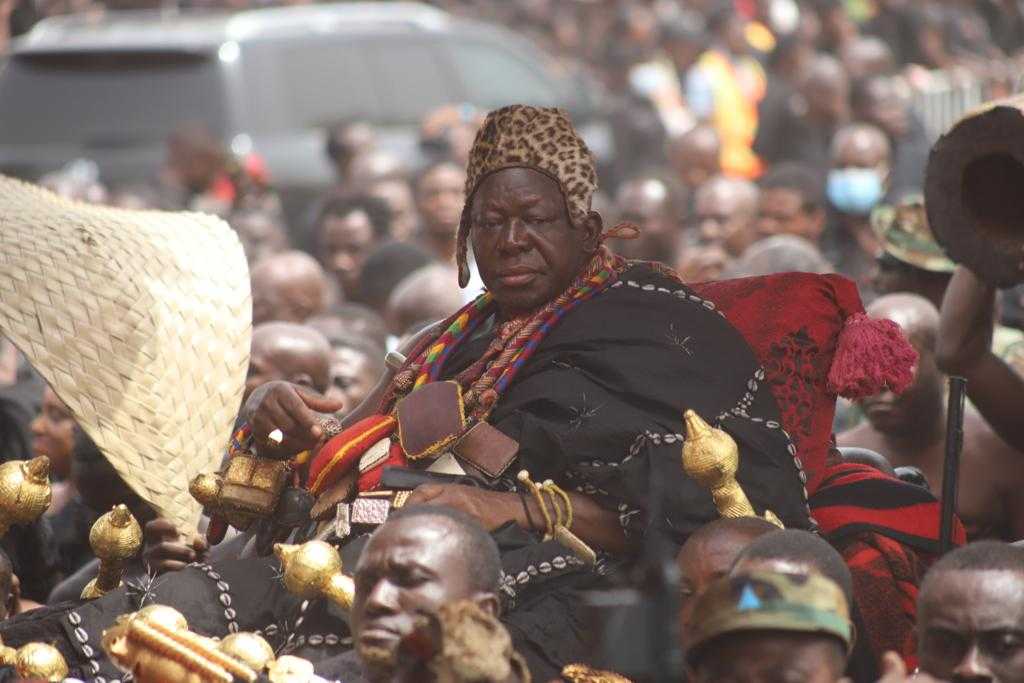Asanteman hosts grand durbar for returned looted artifacts

The Fowler Museum in Los Angeles, California, has officially returned artifacts looted from Asanhene’s Palace in 1874 back to the Asante Kingdom on a permanent basis.
On February 8, the chiefs and people of the Asante Kingdom gathered at the Dwabrem in Manhyia Palace in Kumasi to host a grand durbar, marking the homecoming of several looted artifacts after 150 years. A total of 39 royal regalia and objects, originally taken by British troops during the Sagrenti War, are being returned to the Asantehene in Kumasi.
Among the significant items returning are a black necklace crafted from gold, a royal gold crown, and a stool that were seized by the British army in 1874 and eventually housed in the Fowler Museum, California, USA.
The initial set of seven treasures from the Fowler Museum at the University of California, Los Angeles, has already been delivered to Kumasi and was formally presented to the Asanteman during the grand durbar of chiefs at the Manhyia Palace on Thursday.
The remaining 32 artifacts are expected to arrive from two prominent cultural institutions in the United Kingdom—the British Museum and the Victoria & Albert (V&A) Museum—in April. They will be officially received at a durbar of chiefs in May 2024.
These collections, which include the original sacred Mponponsuo state sword dating back 300 years, as well as various silver and gold ornaments, are being returned under two separate agreements.
The Mponponsuo sword, traditionally used for the oath of office by Asantehenes and the allegiance pledge by paramount chiefs to the Asantehene, holds particular significance among the returned items.
The “Kuntunkuni Durbar” commenced with a presentation by traditional priests at the Manhyia Palace as part of the 150th-anniversary celebration. On this occasion, all paramount chiefs in the Asante Kingdom, except for Tepamanhene, wore black regalia.
The regalia worn by the Asantehene during the event is distinctive and symbolizes the motto “ens3 me nhwe,” meaning “don’t dare me.” This choice was made to commemorate the events of January and February 1874 when the Asante army clashed with the British forces for supremacy.





